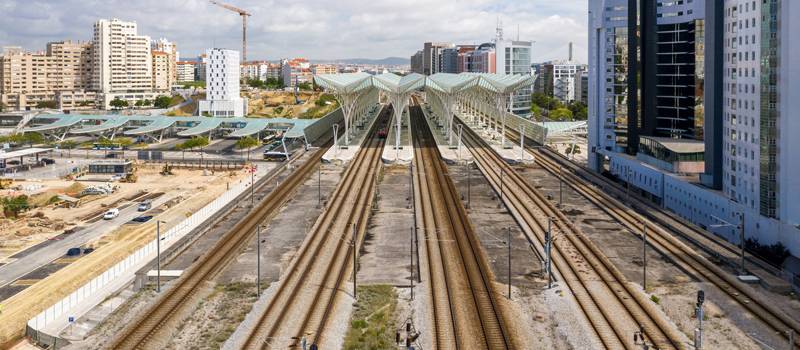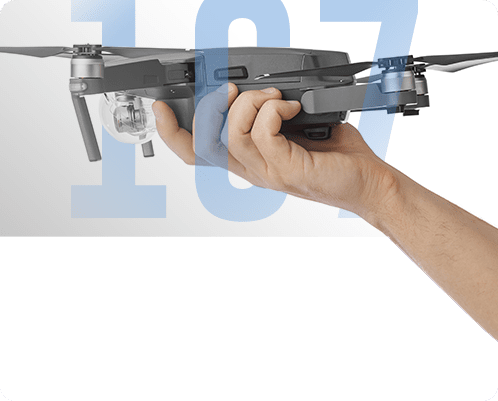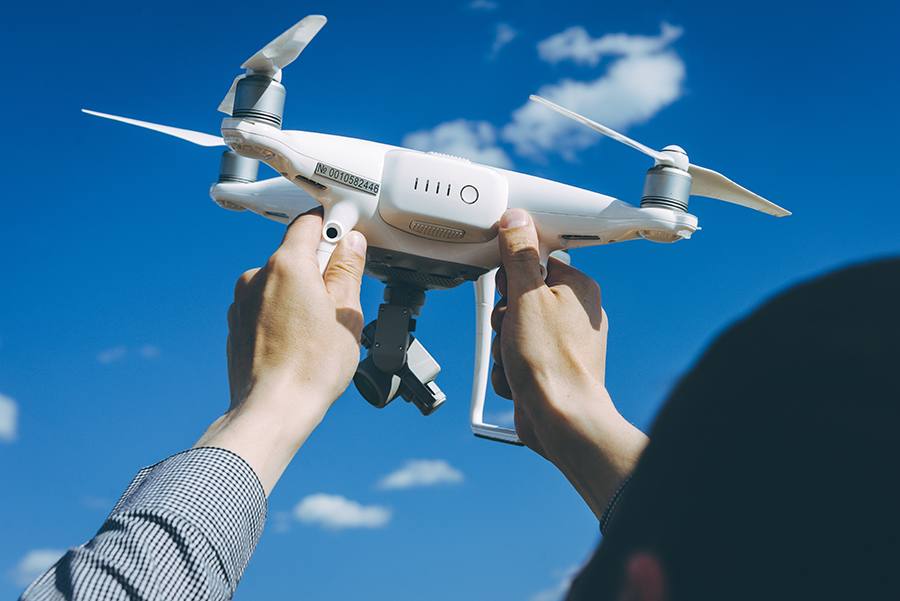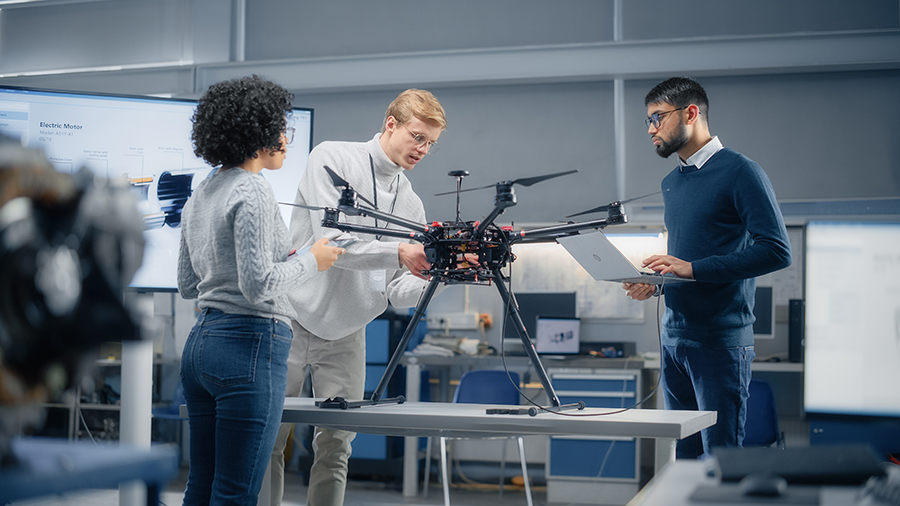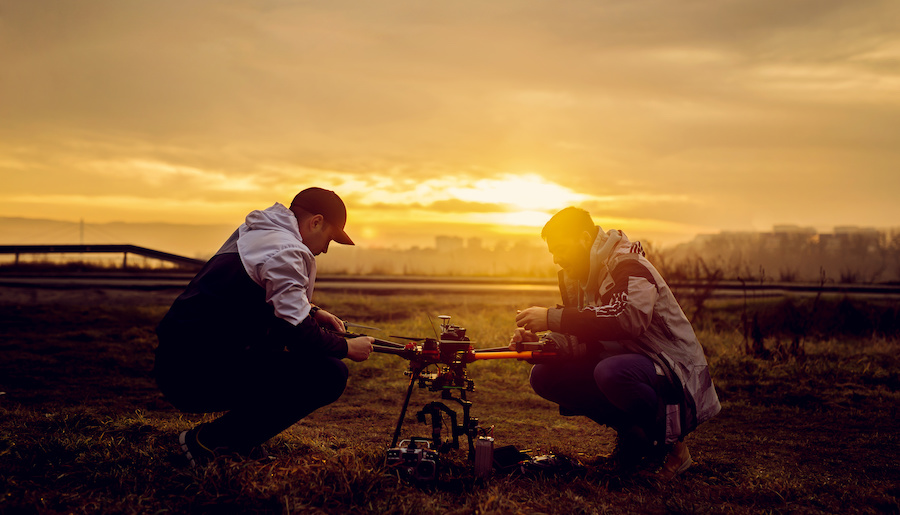-
How are drones used in railways?
- Railway planning
- Monitoring of construction or electrical works
- Regular inspection
- Emergency damage assessment
- Surveillance
-
The benefits of using drones for railway inspection and maintenance
- Time savings
- Increased safety
- Automated collection of high-resolution data
- Reduced costs
-
Legal issues to consider for drone-based railway inspection jobs
- Part 107 certification
- Operations beyond visual line-of-sight
- Operations from a moving vehicle
- Operations over people and moving vehicles
- Controlled airspace
- Drone News Update
-
Final thoughts
As of the end of 2017, there are an estimated 140,000 miles of railroad tracks running across the entire US. These railroad tracks serve as conduits for millions of tons of freight and hundreds of thousands of passengers daily. Considering these numbers, there is no doubt that railways act as critical pathways that facilitate the country’s economy.
As with any large-scale infrastructure, railways require regular maintenance to maintain its reliability. Just by the sheer length of these railways, this can seem like a large task. Fortunately, drones have been called in to help with the job. How have drones been used in railways and what benefits do they offer?
How are drones used in railways?
There are already so many ways in which drones are used in applications that take advantage of how quickly they can cover large distances. From power line inspection to the management of agricultural lands, the speed at which drones fly can make short work of jobs that would have taken hours if it were done by personnel on the ground.
It is then no longer surprising that drones are the perfect tool to do the inspection, data gathering, and analysis of projects related to railways. In what ways have drones proven to be useful?
Railway planning
Even before a railway has been put in place, a drone can be one of the most useful tools for prudent planning. Through the technology of mapping via photogrammetry or LiDAR, a drone can be used to survey the whole extend of an area for a planned railway. The data collected by the drone can then be used to generate a 3D map of the area.
A 3D map is an endlessly navigable and measurable model. When planning a railway, this 3D model can be used to calculate the total length of the railway and how much construction materials will be needed.
Through volume and slope calculations, project planners can also identify geological hazards. This has a large implication on the total cost and timeline of the project, as some excavation and slope stabilization may be necessary.
With a combination of photos and 3D models, project managers should have all the information they need to plan a railway project. This ensures that there are minimal surprises along the way in terms of budget, project timeline, and manpower resources.
Monitoring of construction or electrical works
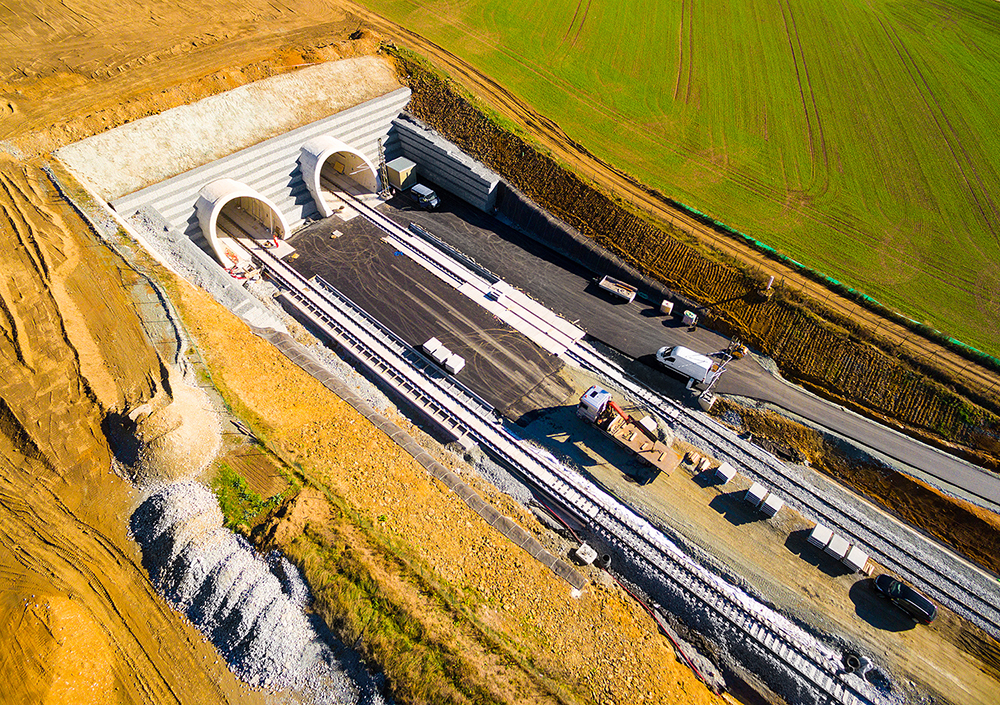
Drones are now commonly used in construction sites as a tool for monitoring the progress of a project. By doing regular inspection rounds by drone, project managers and other stakeholders can keep abreast of how a construction project is ongoing without having to physically visit the project site.
This also applies to railway projects. It might even be more beneficial in this context, as railway projects can easily extend up to hundreds of miles. Providing a bird’s eye view of the perspective also gives stakeholders a unique perspective of the project and perhaps can help them identify potential issues.
One thing to note about railways is that they require constant maintenance – more than any other building. With the extremely rugged conditions that they withstand, not to mention their vulnerability to geological events, railways often have to be repaired or rehabilitated. Whether these maintenance activities require construction or electrical works, a drone can always be called upon as a tool for a quick but thorough inspection and progress monitoring.
Regular inspection
Knowing how critical railways are to the transportations of passengers and goods, they must be inspected regularly to look for signs of damage. This can be tough to do because of how long the railways are. This is a huge expense for railway companies, as they need to dedicate a lot of time and manpower resources to the job.
By making the switch from ground crew to aerial inspection by drone, railway companies have the potential to massively streamline the process and save on both the time spent and costs on regular inspection. Visual inspection can also be done simultaneously with thermal imaging, making it possible to see potential problems with power lines along railways.
Emergency damage assessment
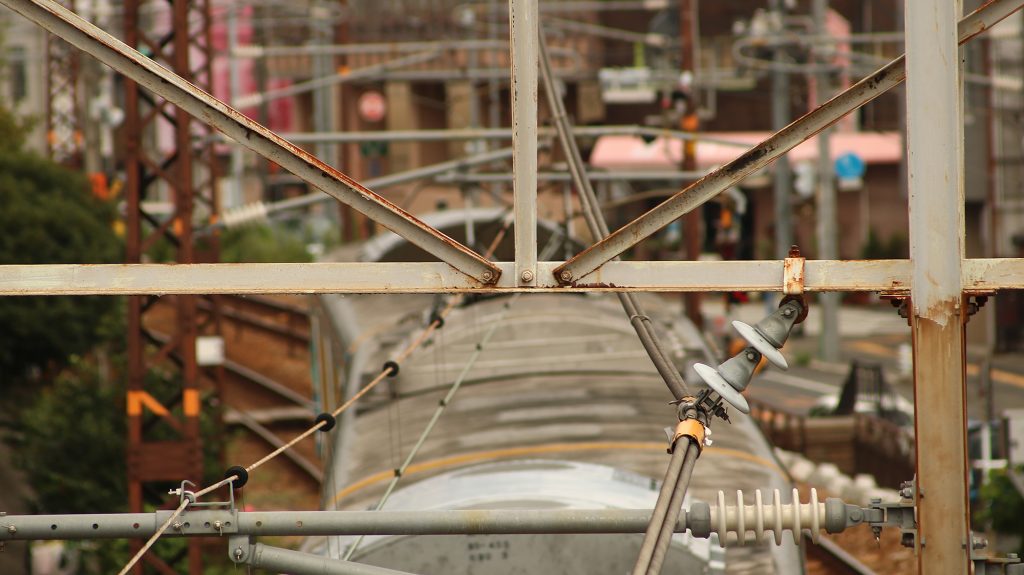
Drones are ideal tools for first responders because they are very easy to deploy. In the event of a natural disaster, a rapid inspection of railways needs to be done to check for any damage. This also needs to be done quickly, as authorities need to decide if railways are safe for use. Considering how critical railways can be in disaster response to deliver emergency supplies or evacuate people, using a drone to speed up the process could literally save lives.
Surveillance
Even if there’s nothing significant going on and inspection of the railway isn’t due, some railway companies still use drones for regular surveillance. This is necessary for some regions or countries where theft and pilferage of railways is a serious problem. Drones with thermal cameras can continue to do surveillance even during the night, which is when these crimes typically happen.
The applications of drones in railways aren’t novel or unusual. Much like in power lines, construction sites, mining, and industrial equipment, the main benefit that drones provide is that they can cover vast distances quickly can be equipped with a payload that is appropriate to operational objectives.
The benefits of using drones for railway inspection and maintenance
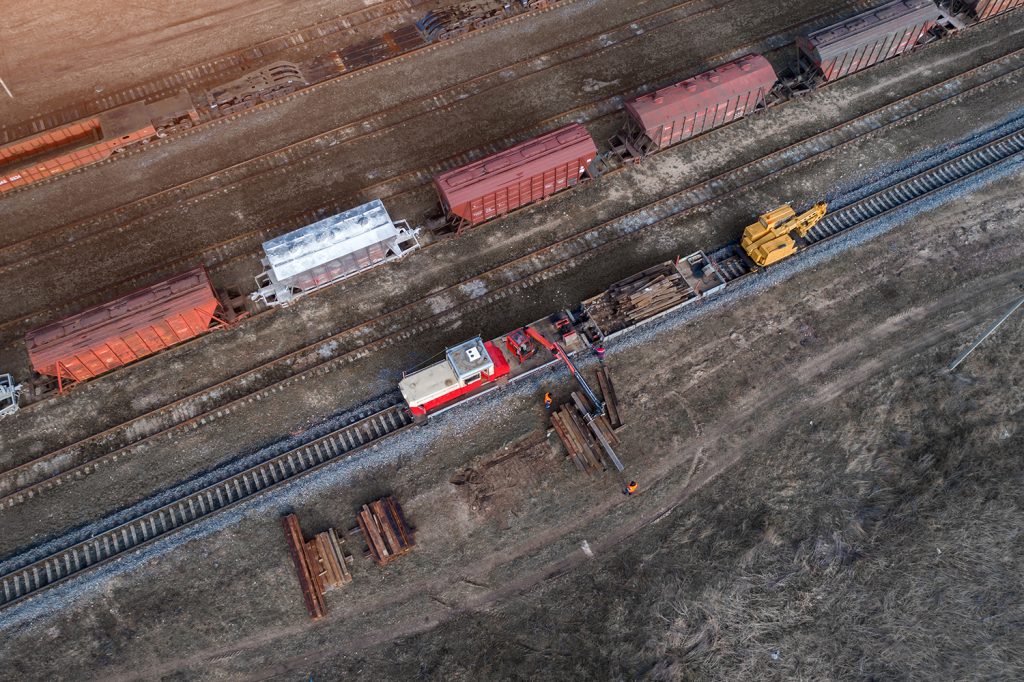
Whenever there is talk of adopting a drone-based program to augment or replace more traditional methods in any setting, the elephant in the room is always the significant capital involved in making such a move. A railway company will either need to take on the services of a professional drone company or buy the drones themselves and train their own drone pilots. Either way, this can be a costly move. Why, then, is it still a good decision for railway companies to make the shift to drones?
Time savings
Having to survey miles of railways can take weeks, even for several teams of inspectors on cars. Aside from having to drive up and down the railways, inspectors will need to make frequent stops to make measurements, check on the status of railway components, and document the various sections of a railway. When there’s technology available that can make doing a job easier and faster, sticking to the old-fashioned methods is unwise and plain stubborn.
For reference, the Mavic 2 Pro can travel up to 14 miles in half an hour – which is approximately the drone’s flight time on a single battery cycle. Batteries can be swapped in and out quickly, so a drone can cover about a hundred miles of railway on a single day. This vastly reduces the time that railway companies need to do a regular inspection or to check for damages.
Increased safety
Safety is a factor that is very hard to put a number but is one of the best justifications for using drones for railway inspection. Anytime a railway company places people on or around railways that are actively being used, there will always be a danger of their personnel suffering an injury or death. By simply removing the need for people to walk along these railways, companies already get a huge premium out of making the shift to drone inspection.
Automated collection of high-resolution data
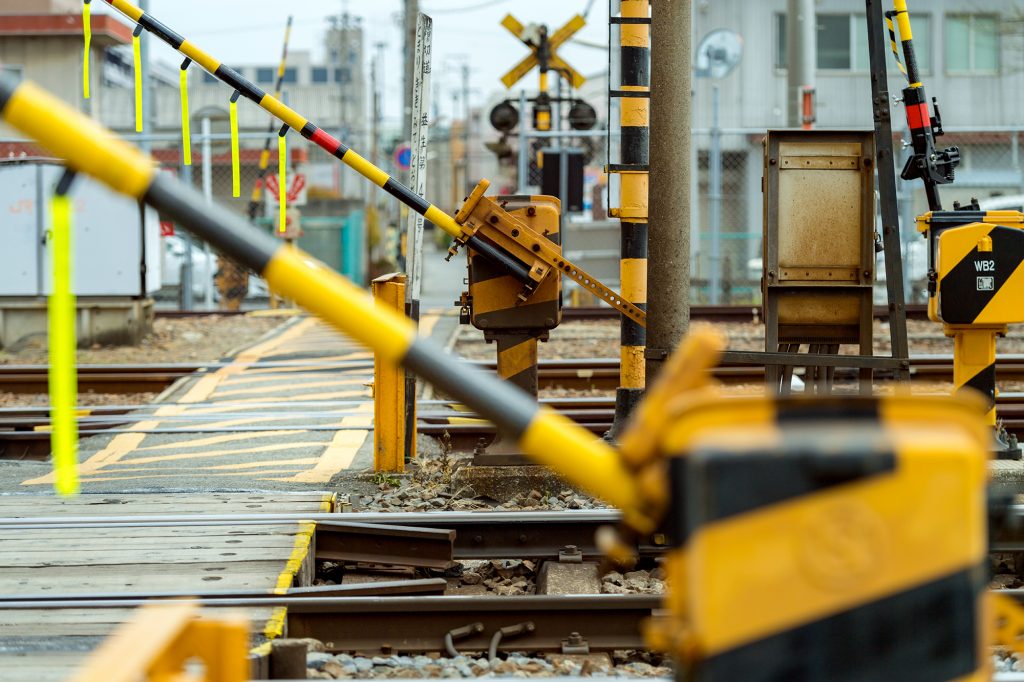
It takes considerable skill and a trained eye to inspect a railway for potential problems. While heavy damage is fairly obvious, other areas are more subtle – a track misaligned by a few centimeters or a nearby slope that is very slowly deteriorating. Humans, no matter how skilled they are, are imperfect beings and can miss a lot of these subtle clues because of exhaustion or lack of experience.
Drones and onboard sensors have no such weaknesses. As long as proper parameters have been put in place, drones can gather data at centimeter-level accuracy. These images and models can then be processed using AI or advanced analytics to check for discrepancies from the normal. The reduction of survey data to a digital format means that thresholds are consistent and not left up to human judgment.
Another advantage of using drones is that repeat inspection surveys can be done consistently. Drones can follow pre-programmed flight paths and use the same survey parameters whenever they fly over a particular section of the railway, ensuring consistent data collection. This can be crucial when analyzing changes over time.
Reduced costs
While railways companies likely aren’t spending a huge amount on inspection using ground-based personnel, shifting to drone-based inspection means that they can do more frequent railways inspection with fewer people. Not only does this free up the workforce to do more useful work but doing more frequent inspection means that there is less probability of a serious accident happening.
The cost of a single railway accident because of deteriorated equipment is more than enough to justify the use of drones – not to mention the cost of human life.
Legal issues to consider for drone-based railway inspection jobs
One of the main challenges in adopting drone use in railways is the fact that the legal landscape of drone regulations is still constantly shifting and evolving. This is, after all, still a new piece of technology that many in society and the government feel strongly about. If you’re planning to start a drone-based railway program, then here are some legal considerations.
Part 107 certification
Railway operations is still a business that needs to earn money, which means that the use of drones to aid in railway operations is considered a commercial application. This also means that drone pilots who do work for railway operations need to have a remote pilot certificate under the FAA’s Part 107 rules.
The easiest way for a railway company to ensure compliance with this rule is to hire a professional drone services firm. They have the option of training their own drone pilot and sending them out for certification, but this is a process that will likely take some time.
Operations beyond visual line-of-sight
While we’ve been singing the praises of drones that can travel more than 10 miles on a single battery cycle, the truth is that this is not allowed by law if done by a stationary drone pilot. Under the Part 107 rules, drone pilots need to keep their drone within visual line-of-sight and must always know the drone’s location and attitude.
The justification behind the rule should be fairly obvious – a drone that the pilot cannot see is more likely to be involved in a crash. Even flight using the drone’s onboard camera is not allowed, as it only gives the pilot a very limited field of view.
Operations from a moving vehicle
When surveying long stretches of railways, a common strategy to bypass the visual line-of-sight limitation is for the drone pilot to move along with the drone – typically onboard a vehicle. However, the FAA also expressly prohibits the operation of a drone when the pilot is riding a moving vehicle.
There are simply too many elements in play when a drone pilot resorts to this method. The drone can struggle to keep pace with the car, the perspective of the drone pilot will be constantly changing, and the car might even run into an accident because of too much distraction. While still viable, it will take an experienced team to perform such a coordinated operation.
Operations over people and moving vehicles
A major challenge of doing railway inspection via drones is the fact that they are not supposed to fly over people and moving vehicles – including trains. Naturally, this is a huge hurdle as trains can come along very rapidly and with little time for the drone pilot to react. This is mostly because the consequence of a drone crash near a moving vehicle can be disastrous.
Controlled airspace
The expanse of railways means that they can cross entire regions, cities, and state borders. This can be a huge challenge for the drone pilot as drone operations aren’t allowed everywhere. The most common hurdle would probably be patches of controlled airspace, or areas close to airports.
The good news is that flying in controlled airspace is no longer as big of a problem for drone pilots. Through the LAANC capabilities integrated into many popular drone flight planning apps, drone pilots can send a request for airspace authorization straight to the FAA and receive a response in just a few minutes.
These hurdles to using drones for railways may seem overwhelming, but it should also be reassuring to know that many railway companies in the world have long adopted drone-based practices. Through careful planning and with the help of experienced drone pilots, there is a way to work around all these flight restrictions.
The Part 107 restrictions we have mentioned here can all be waived by the FAA as long as the drone pilot or railway company files the appropriate requests. Filing a waiver takes considerable work, but it’s the only way that the FAA can be assured that the drone pilot can conduct the operations safely in otherwise restricted conditions.
Operations will probably have to be augmented with more resources for the FAA to approve of waiver requests. For instance, operations beyond visual line-of-sight will almost certainly require a larger team of visual observers. Operations over people or moving vehicles are typically done by attaching a third-party parachute system to the drone. A lot of these measures are already being practiced – you only need to know where to look.
Final thoughts
Railways are some of the most important means of transportation worldwide, allowing for rapid transit of both passengers and goods over large distances. As such, it is absolutely essential that railways are planned and built according to high standards of quality, and that they are regularly maintained to ensure reliability. This is a huge job which can be significantly made easier by the use of drones.
Just as with any commercial drone use, certain challenges need to be overcome by a railway company that wishes to adopt drone-based inspection and survey practices. All these challenges have been overcome before, and the FAA is pretty lenient when it comes to drone use for the purpose of public safety.
